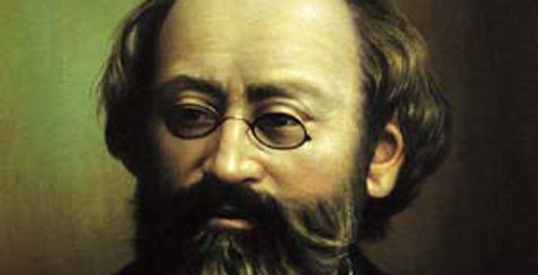Introduction:
When it comes to romantic and emotive compositions, few composers can match the artistry of Max Bruch. Born in Cologne, Germany, in 1838, Bruch left an indelible mark on the world of classical music. His compositions possess a captivating blend of passion, rich melodies, and orchestral brilliance that continue to resonate with audiences today. In this blog post, we dive into the mesmerizing realm of Max Bruch’s music and explore the 10 best songs that showcase his remarkable talent and enduring legacy.
- Violin Concerto No. 1 in G minor: Undoubtedly, one of Bruch’s most famous works, the Violin Concerto No. 1 in G minor is a triumph of romantic expression. With its enchanting melodies and virtuosic passages, it has become a cornerstone of the violin repertoire. The concerto’s deeply emotional second movement, Adagio, is particularly unforgettable, evoking a sense of yearning and melancholy that tugs at the heartstrings.
- Scottish Fantasy for Violin and Orchestra: Bringing together elements of Scottish folk music and classical tradition, the Scottish Fantasy is a breathtaking showcase for the violin. Bruch’s masterful incorporation of Scottish folk tunes, such as “Auld Rob Morris” and “Scots Wha Hae,” adds a distinct flavor to this symphonic poem. The piece takes listeners on a captivating journey through sweeping landscapes and poignant emotions.
- Kol Nidrei for Cello and Orchestra: Based on Jewish liturgical melodies, Kol Nidrei is a deeply moving and introspective composition. Bruch’s sublime orchestration serves as a backdrop for the soulful and lyrical voice of the cello, creating a profound spiritual experience. Its haunting beauty and poignant themes resonate with listeners of all backgrounds.
- Symphony No. 3 in E major: Bruch’s Symphony No. 3 showcases his mastery of orchestral composition. From the lively and energetic opening to the majestic and uplifting finale, the symphony weaves together a tapestry of emotions and musical ideas. The second movement, marked Adagio, is particularly noteworthy for its poignant melodies and lush harmonies.
- Violin Concerto No. 2 in D minor: While overshadowed by his first concerto, Bruch’s Violin Concerto No. 2 is a gem in its own right. With its dramatic flair and lush romantic melodies, this lesser-known concerto offers a captivating musical journey. Its finale, filled with fiery passion and virtuosic displays, leaves a lasting impression on both the performer and the audience.
- Eight Pieces for Clarinet, Viola, and Piano: In this chamber music work, Bruch showcases his ability to create intimate and evocative compositions. The Eight Pieces for Clarinet, Viola, and Piano brim with melodic richness and captivating dialogues among the instruments. From lively dance-like movements to tender and introspective passages, this collection exemplifies Bruch’s versatility as a composer.
- Swedish Dances for Orchestra: Inspired by Swedish folk tunes, Bruch’s Swedish Dances exude a vibrant and joyous spirit. The playful melodies and rhythmic vigor capture the essence of traditional Swedish music while infusing it with Bruch’s distinctive style. These lively dances showcase Bruch’s ability to create music that is both charming and uplifting.
- Romance for Viola and Orchestra in F major: The Romance for Viola and Orchestra is a hidden gem within Bruch’s repertoire. Written with deep expressiveness, the piece beautifully highlights the warm and sonorous qualities of the viola. Bruch’s masterful orchestration provides a lush backdrop, creating a tender and intimate musical conversation.
- Odysseus: Overture to a Drama: Bruch’s Odysseus Overture paints a musical picture of the legendary hero’s journey. From the turbulent seas to the triumphant return, this overture captures the epic scale and emotional intensity of the ancient Greek tale. Bruch’s gift for storytelling shines through, making it a captivating piece from start to finish.
- String Quintet in E-flat major: Closing our list is Bruch’s String Quintet, a chamber work that reflects his mature compositional style. The quintet showcases Bruch’s impeccable craftsmanship, with its intricate counterpoint, rich harmonies, and breathtaking melodies. This lesser-known piece is a testament to Bruch’s mastery of chamber music.
Conclusion:
Max Bruch’s compositions continue to enchant listeners with their passionate melodies and exquisite craftsmanship. Whether it is his violin concertos, orchestral works, or chamber music, Bruch’s music has an enduring appeal that resonates across generations. Exploring these 10 masterpieces by Bruch is a gateway to a world of profound emotions and timeless beauty, reminding us of the enduring legacy of this remarkable composer.

Comments are closed